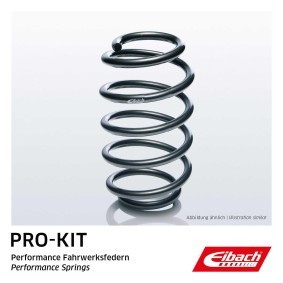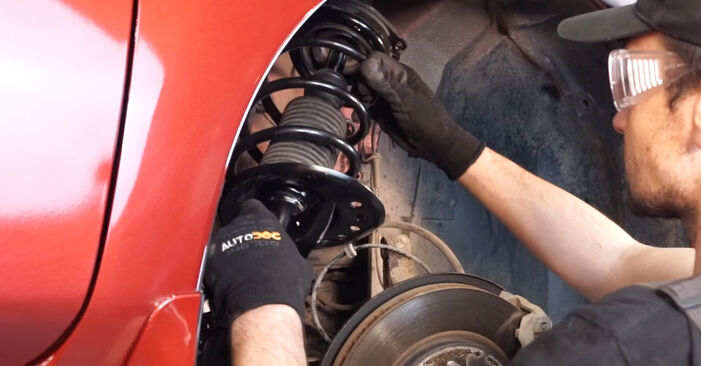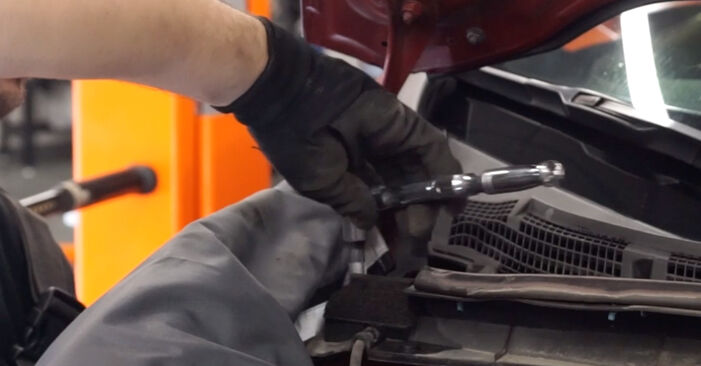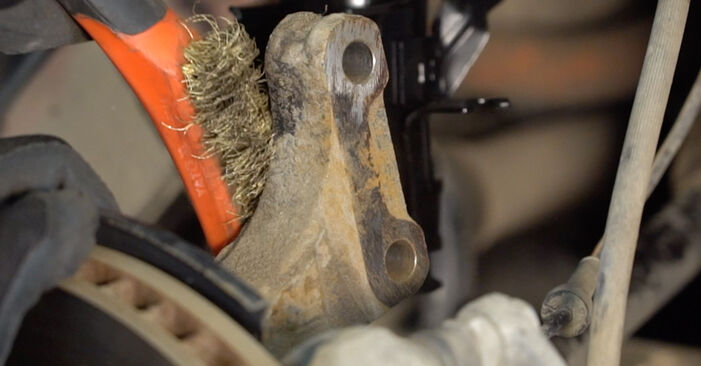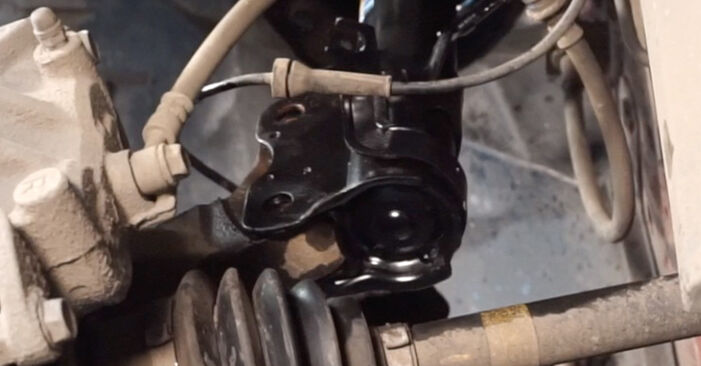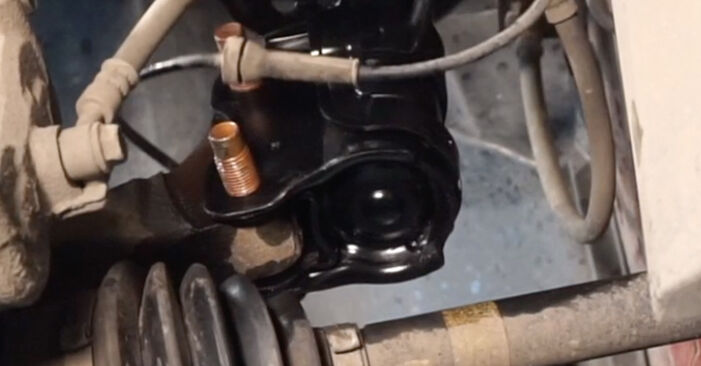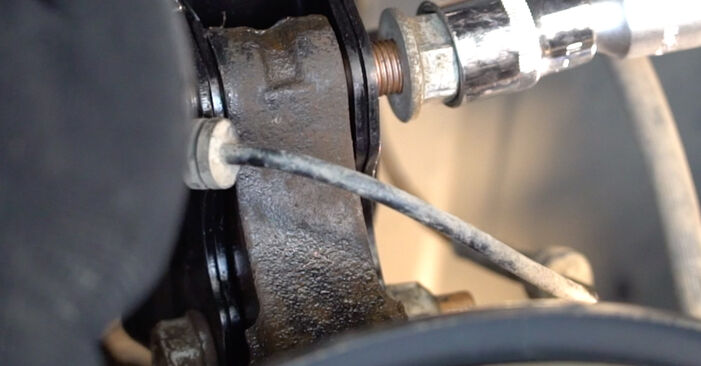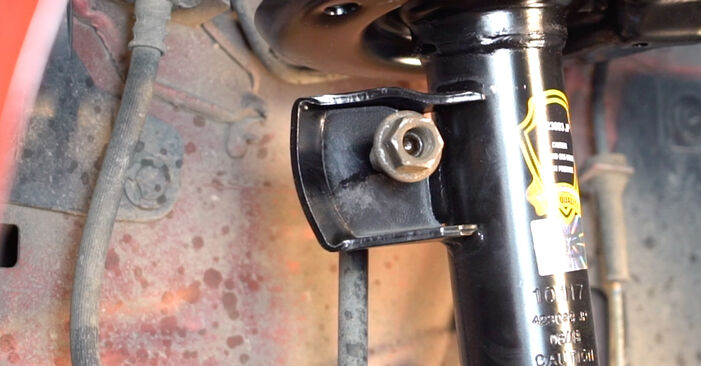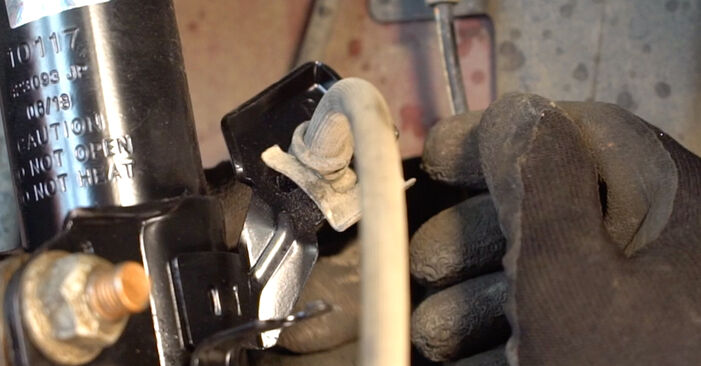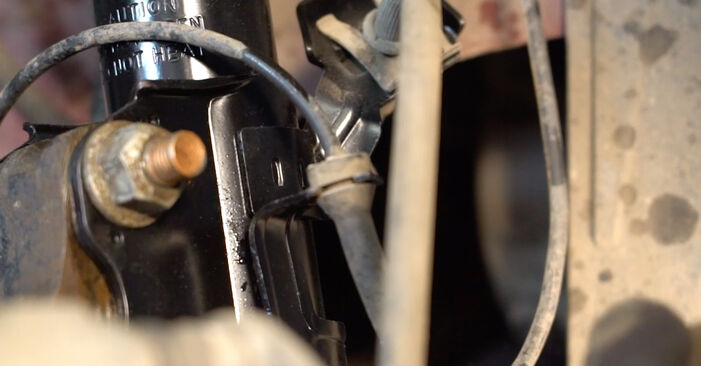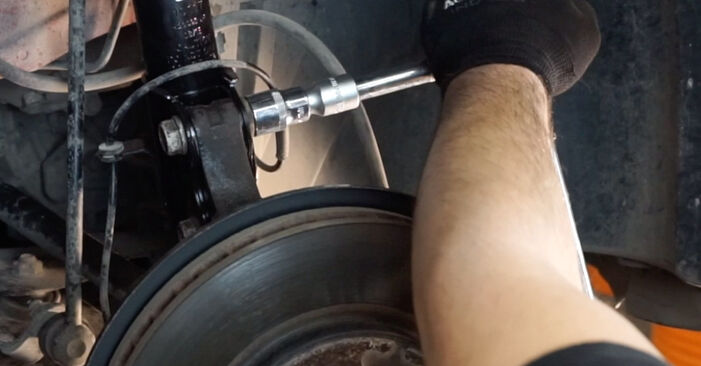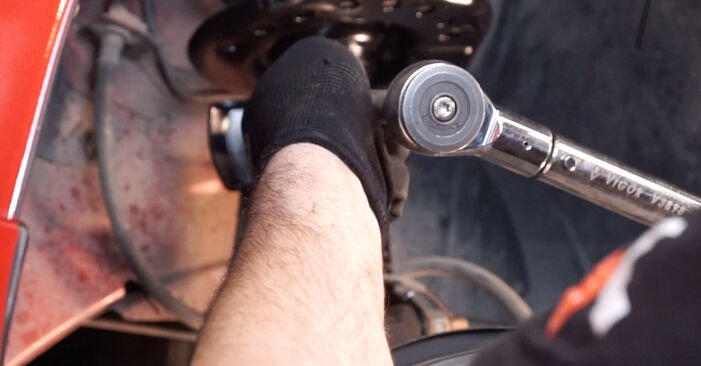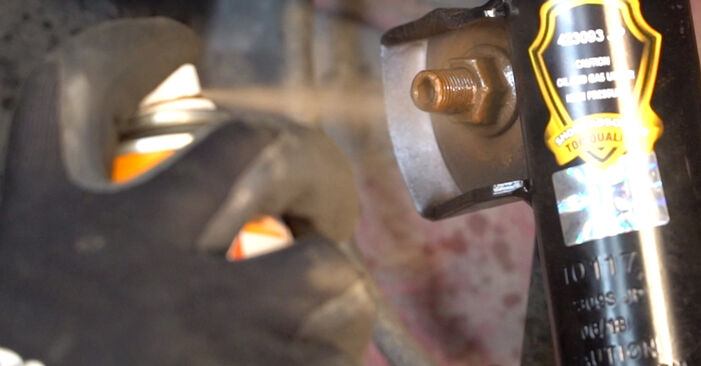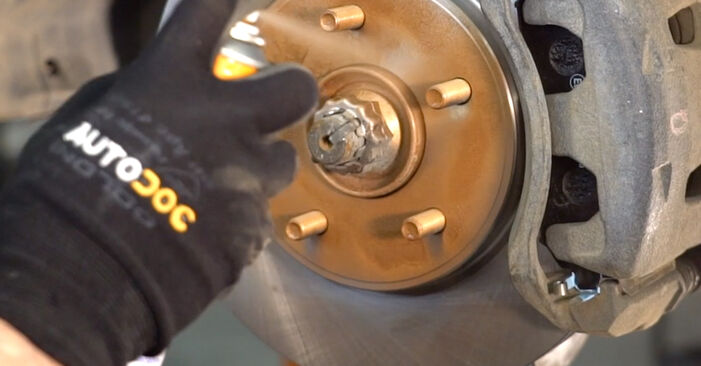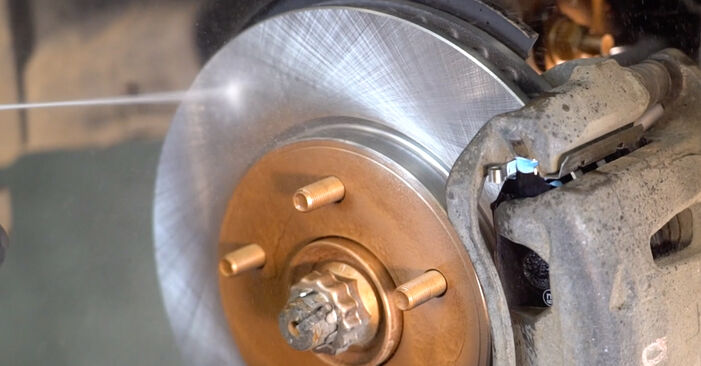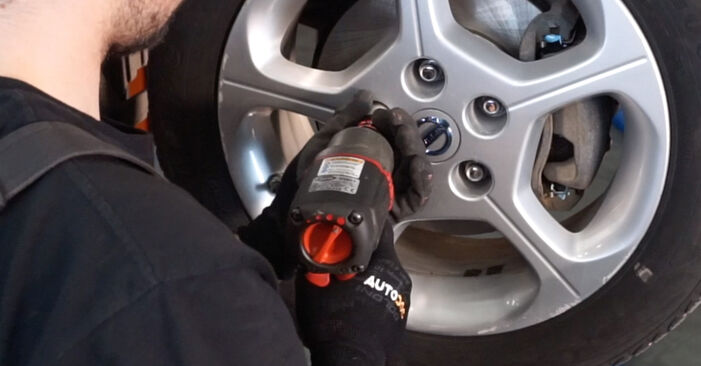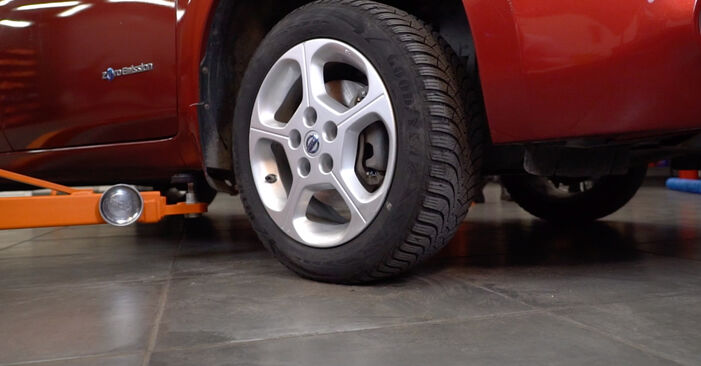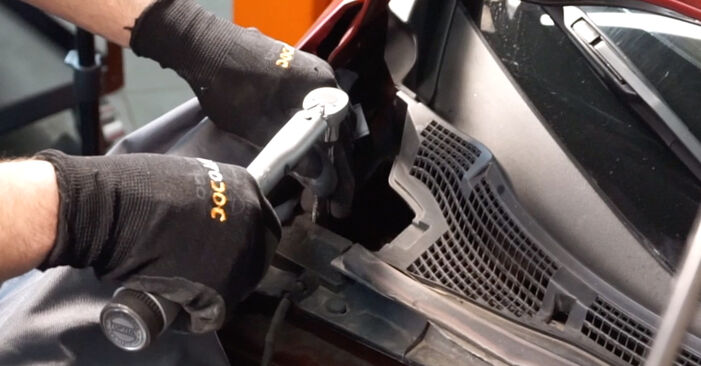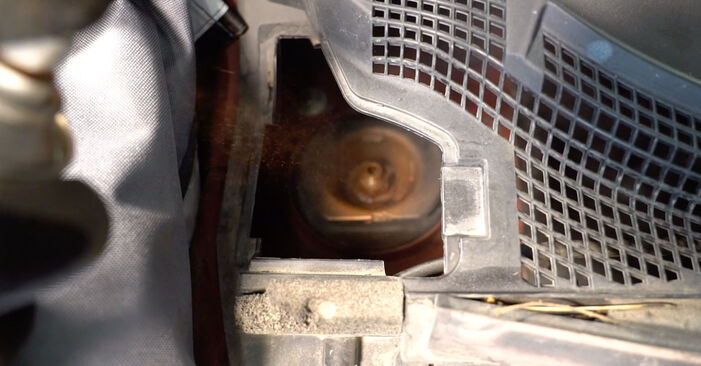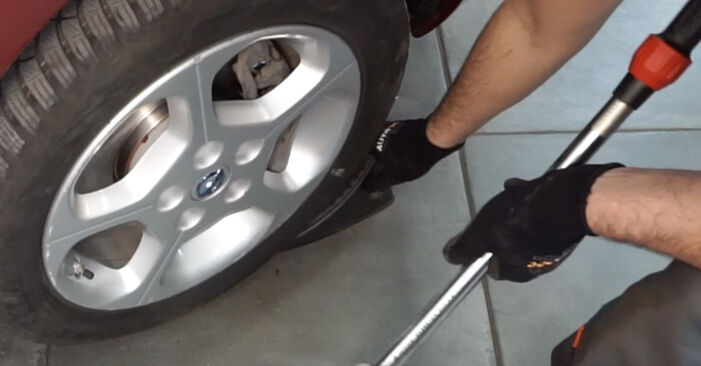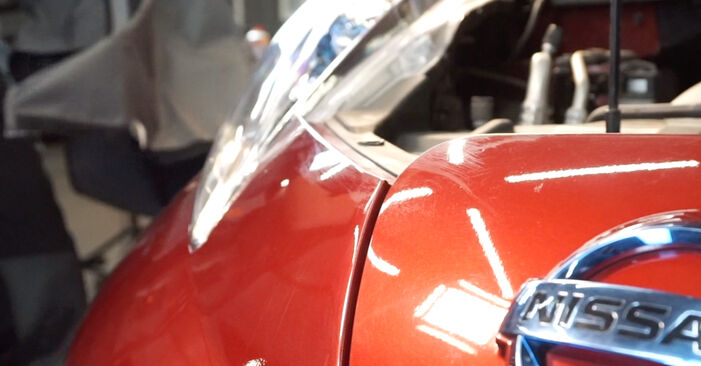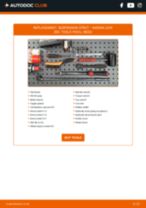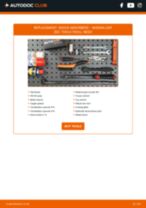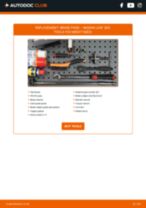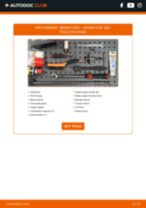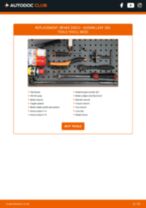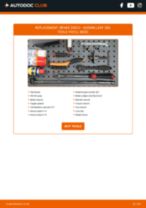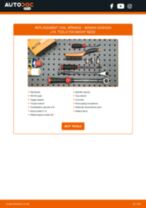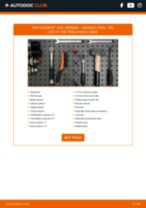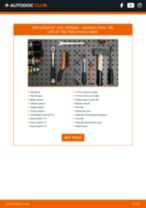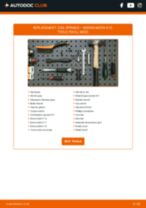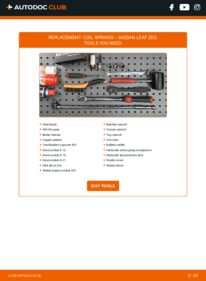
Disclaimer
How to change front coil springs on Nissan Leaf ZE0 – replacement guide
downloads:
8
Views:
90
Important!
This replacement procedure can be used for:
NISSAN Leaf (ZE1_) Electric, NISSAN Leaf (ZE1_) Electric … View more
The steps may slightly vary depending on the car design.
NISSAN Leaf (ZE1_) Electric, NISSAN Leaf (ZE1_) Electric … View more
The steps may slightly vary depending on the car design.
How to change front springs / front coil springs on NISSAN LEAF 1 (ZE0U) [TUTORIAL AUTODOC]

All the parts you need to replace – Springs for LEAF and other NISSAN models
Alternative products

Wire brush
WD-40 spray
Brake cleaner
Copper grease
Combination spanner #21
Drive socket # 13
Drive socket # 18
Drive socket # 21
HEX bit no.H6.
Wheel impact socket #21
Ratchet wrench
Torque wrench
Tap wrench
Crow bar
Rubber mallet
Hydraulic strut spring compressor
Hydraulic transmission jack
Fender cover
Wheel chock
Replacement: coil springs – Nissan Leaf ZE0. AUTODOC experts recommend:
- Both coil springs of the front suspension should be replaced simultaneously.
- The replacement procedure is identical for the left and right coil springs of the front suspension.
- All work should be done with the engine stopped.
Replacement: coil springs – Nissan Leaf ZE0. Use the following procedure:
- Step 1
 Open the bonnet.
Open the bonnet. - Step 2
 Use a fender protection cover to prevent damaging paintwork and plastic parts of the car.
Use a fender protection cover to prevent damaging paintwork and plastic parts of the car. - Step 3
 Raise up and remove the cowl grille.
Raise up and remove the cowl grille. - Step 4
 Clean the fasteners of the shock strut upper mount. Use WD-40 spray.
Clean the fasteners of the shock strut upper mount. Use WD-40 spray. - Step 5
 Loosen the upper fastener of the shock strut mount. Use a drive socket #13. Use a ratchet wrench.
Loosen the upper fastener of the shock strut mount. Use a drive socket #13. Use a ratchet wrench. - Step 6
 Secure the wheels with chocks.
Secure the wheels with chocks. - Step 7
 Loosen the wheel mounting bolts. Use wheel impact socket #21.
Loosen the wheel mounting bolts. Use wheel impact socket #21. - Step 8
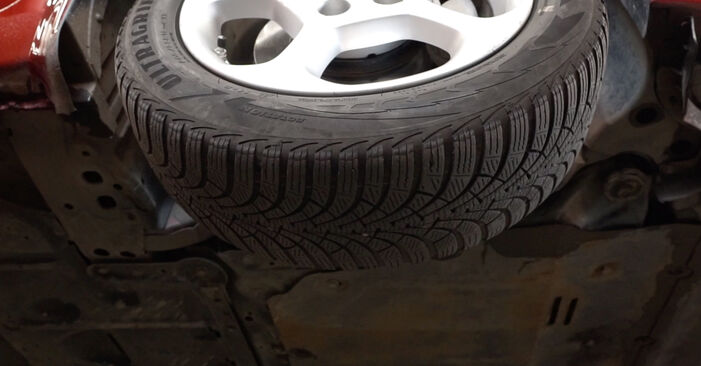 Raise the front of the car and secure on supports.
Raise the front of the car and secure on supports. - Step 9
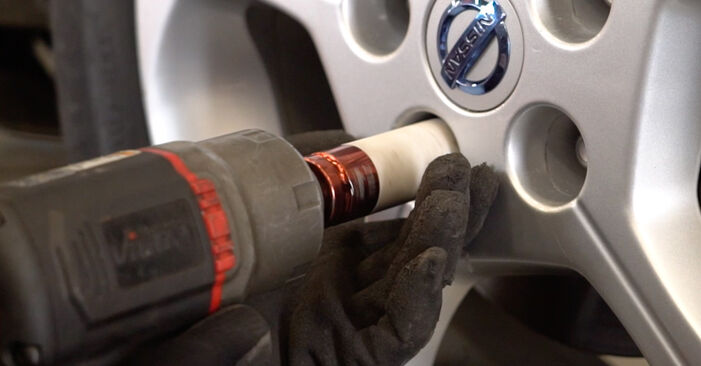 Unscrew the wheel bolts.Replacement: coil springs – Nissan Leaf ZE0. Tip from AUTODOC:To avoid injury, hold up the wheel when unscrewing the bolts.
Unscrew the wheel bolts.Replacement: coil springs – Nissan Leaf ZE0. Tip from AUTODOC:To avoid injury, hold up the wheel when unscrewing the bolts. - Step 10
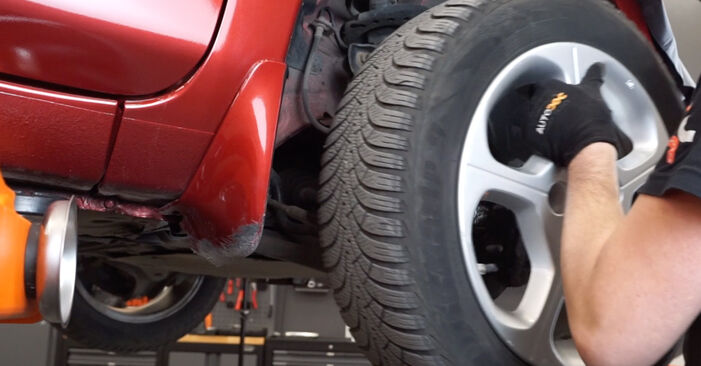 Remove the wheel.
Remove the wheel. - Step 11
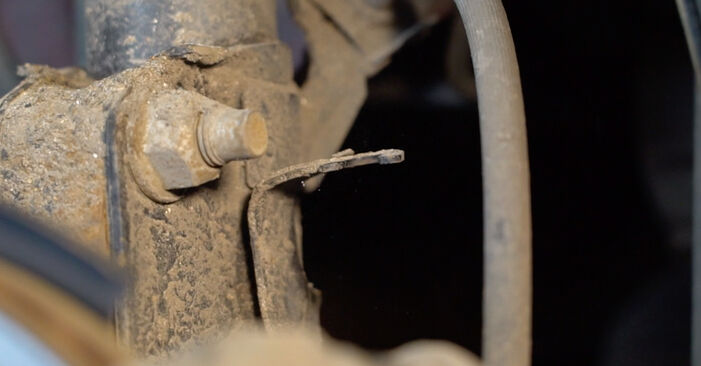 Remove the brake hose retaining clip.
Remove the brake hose retaining clip. - Step 12
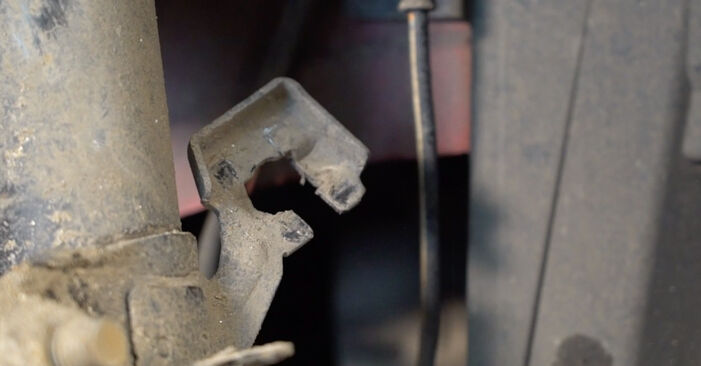 Disconnect the wiring and the brake hose from the bracket on the shock strut. Use a crowbar.
Disconnect the wiring and the brake hose from the bracket on the shock strut. Use a crowbar. - Step 13
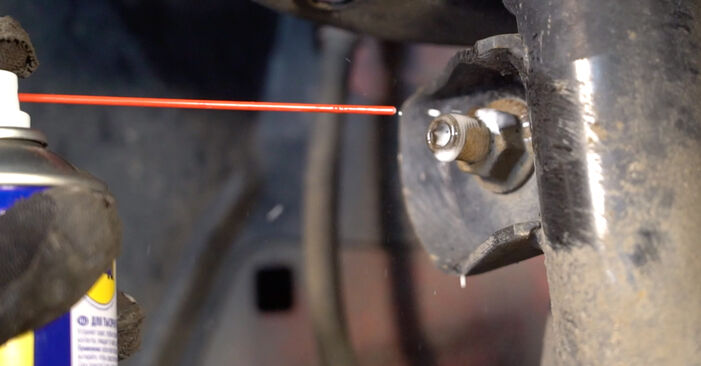 Clean the fasteners connecting the stabiliser link to the shock strut, and those connecting the shock strut to the steering knuckle. Use a wire brush. Use WD-40 spray.
Clean the fasteners connecting the stabiliser link to the shock strut, and those connecting the shock strut to the steering knuckle. Use a wire brush. Use WD-40 spray. - Step 14
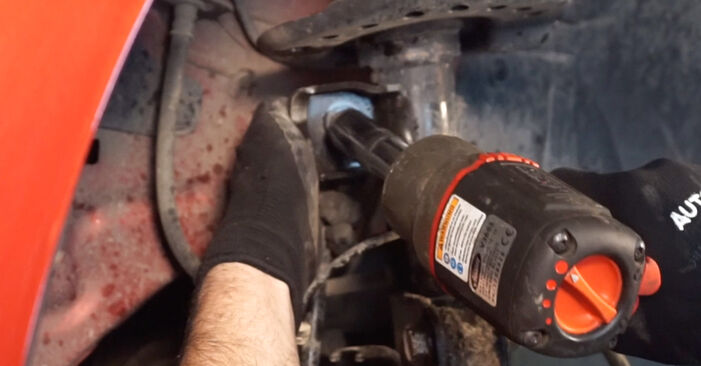 Unscrew the nut and remove the stabilizer rod from the shock strut. Use a drive socket #18.
Unscrew the nut and remove the stabilizer rod from the shock strut. Use a drive socket #18. - Step 15
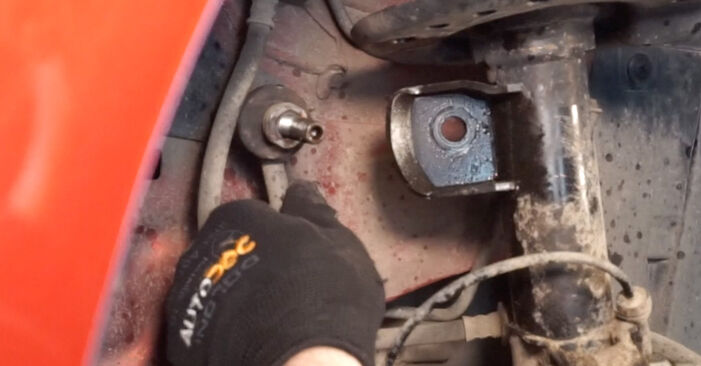 Remove the stabilizer rod.
Remove the stabilizer rod. - Step 16
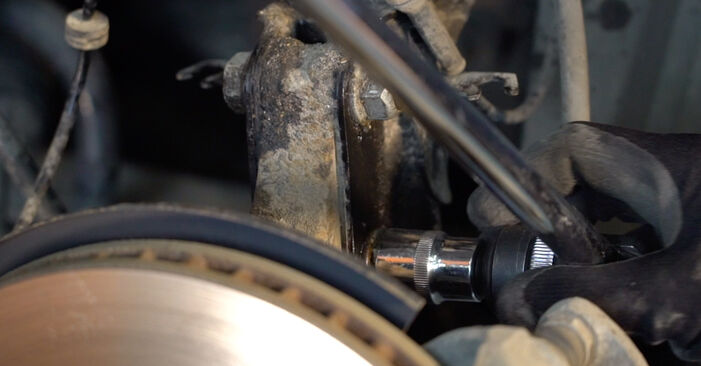 Unscrew the lower fastener connecting the shock strut to the steering knuckle. Use a combination spanner #21. Use a drive socket #21. Use a tap wrench.
Unscrew the lower fastener connecting the shock strut to the steering knuckle. Use a combination spanner #21. Use a drive socket #21. Use a tap wrench. - Step 17
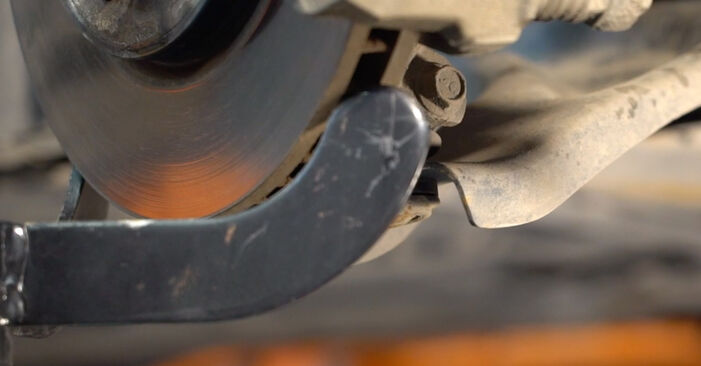 Prop up the steering knuckle. Use a hydraulic transmission jack.
Prop up the steering knuckle. Use a hydraulic transmission jack. - Step 18
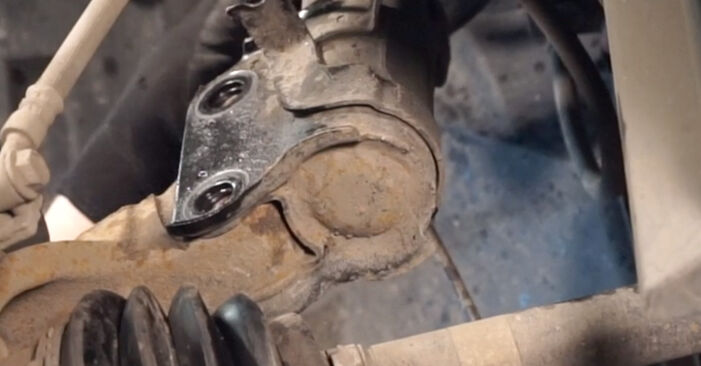 Remove the fastening bolts.
Remove the fastening bolts. - Step 19
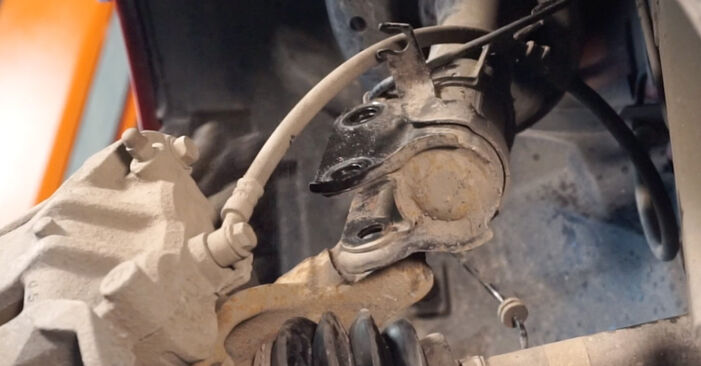 Disconnect the steering knuckle from the shock absorber strut.
Disconnect the steering knuckle from the shock absorber strut. - Step 20
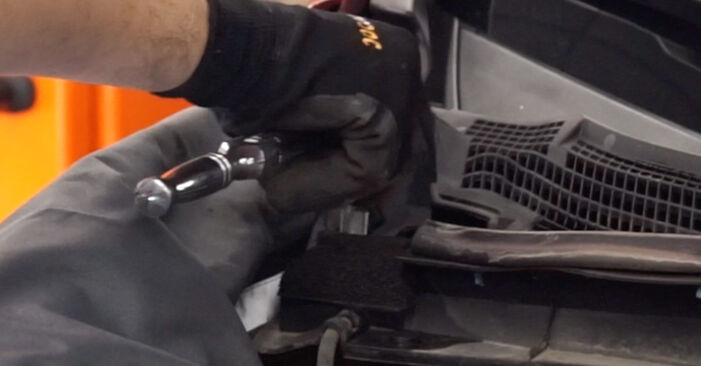 Unscrew the top fastening of the shock strut mount. Use a drive socket #13.AUTODOC recommends:Important! Hold the suspension strut while unscrewing the fastening bolts. Nissan Leaf ZE0
Unscrew the top fastening of the shock strut mount. Use a drive socket #13.AUTODOC recommends:Important! Hold the suspension strut while unscrewing the fastening bolts. Nissan Leaf ZE0 - Step 21
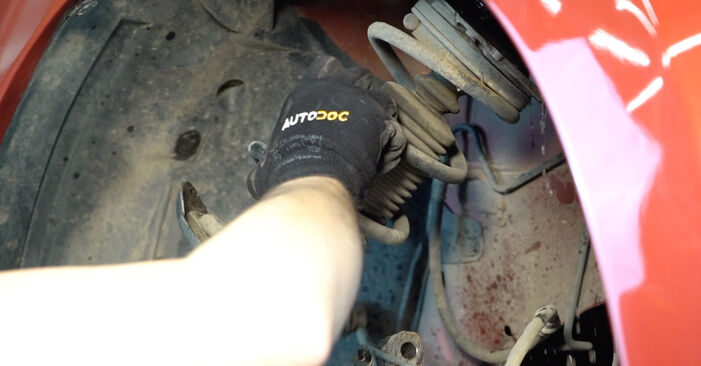 Remove the suspension strut.
Remove the suspension strut. - Step 22
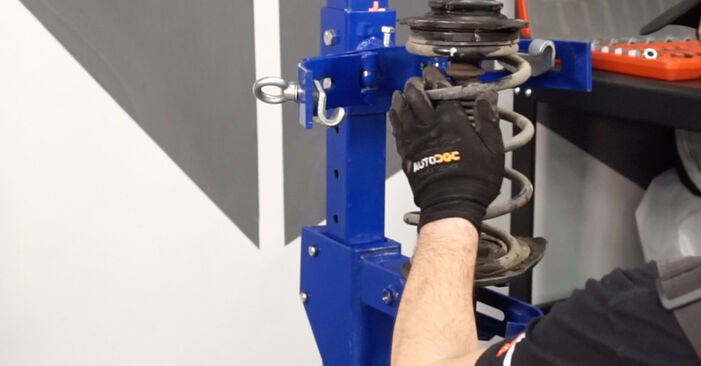 Set the shock absorber strut on the spring compressor tool.Replacement: coil springs – Nissan Leaf ZE0. Professionals recommend:Note that when using a spring compressor, spring coils need to be securely gripped, compressing the spring on the opposite sides.Ensure the correct position of the spring in the retainer.Make sure that the spring coils tightly entered the lock handles.
Set the shock absorber strut on the spring compressor tool.Replacement: coil springs – Nissan Leaf ZE0. Professionals recommend:Note that when using a spring compressor, spring coils need to be securely gripped, compressing the spring on the opposite sides.Ensure the correct position of the spring in the retainer.Make sure that the spring coils tightly entered the lock handles. - Step 23
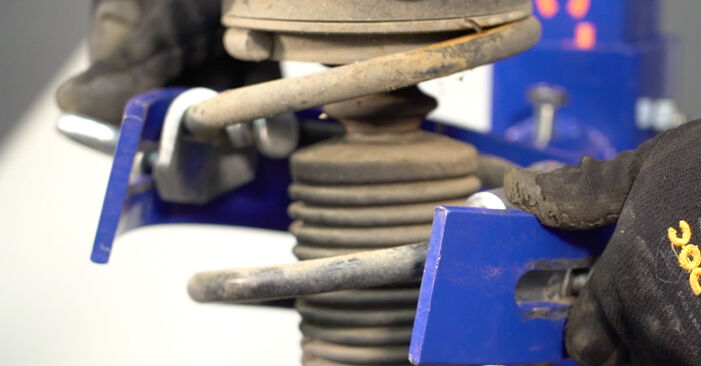 Compress the spring.
Compress the spring. - Step 24
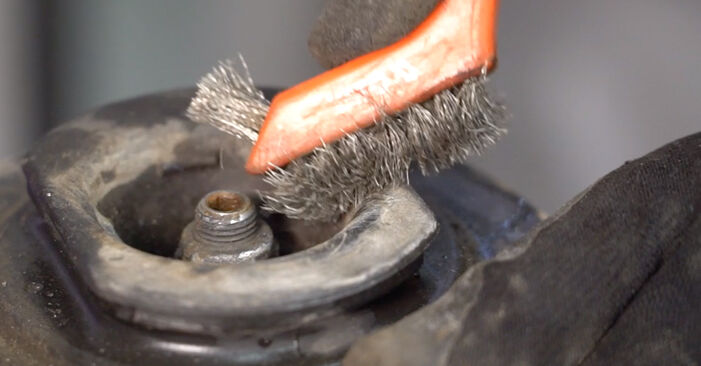 Treat the shock strut rod. Use a wire brush. Use WD-40 spray.
Treat the shock strut rod. Use a wire brush. Use WD-40 spray. - Step 25
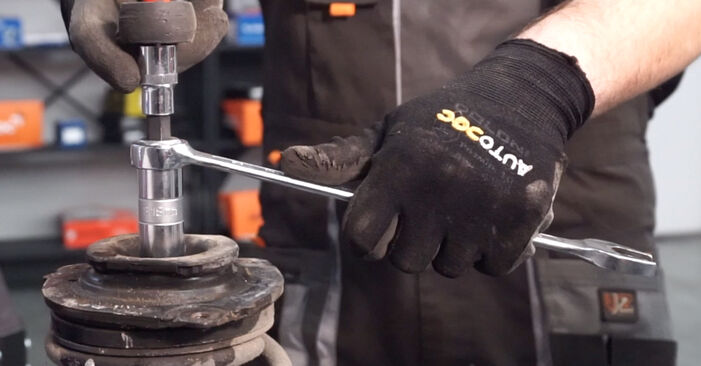 Remove the strut piston rod nut. Use HEX No.H6. Use a drive socket #18. Use a ratchet wrench.
Remove the strut piston rod nut. Use HEX No.H6. Use a drive socket #18. Use a ratchet wrench. - Step 26
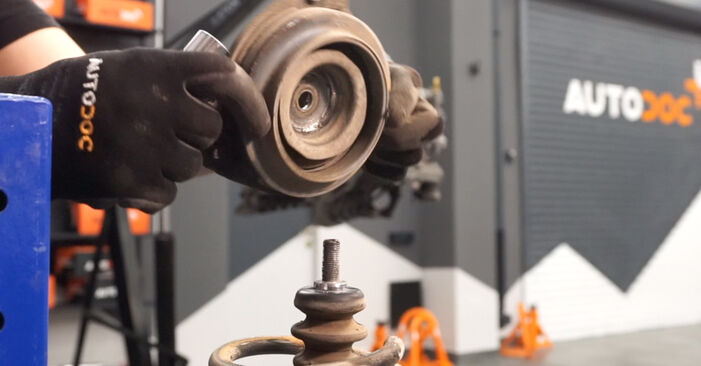 Remove the top strut mount.
Remove the top strut mount. - Step 27
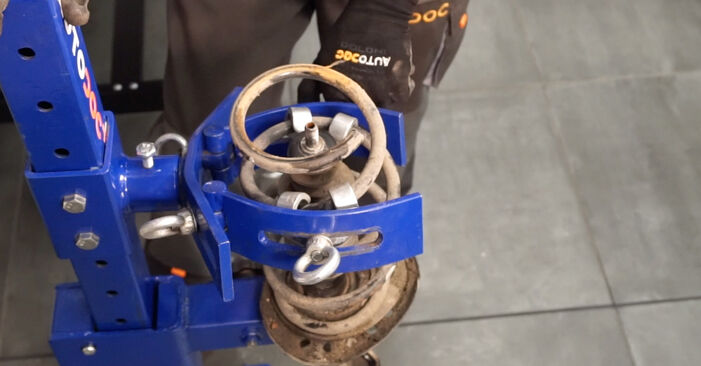 Release the coil spring.
Release the coil spring. - Step 28
 Remove the spring.AUTODOC recommends:Replacement: coil springs – Nissan Leaf ZE0. Carefully inspect the mount, the boot, and the bump stop of the shock absorber. Replace if necessary.
Remove the spring.AUTODOC recommends:Replacement: coil springs – Nissan Leaf ZE0. Carefully inspect the mount, the boot, and the bump stop of the shock absorber. Replace if necessary. - Step 29
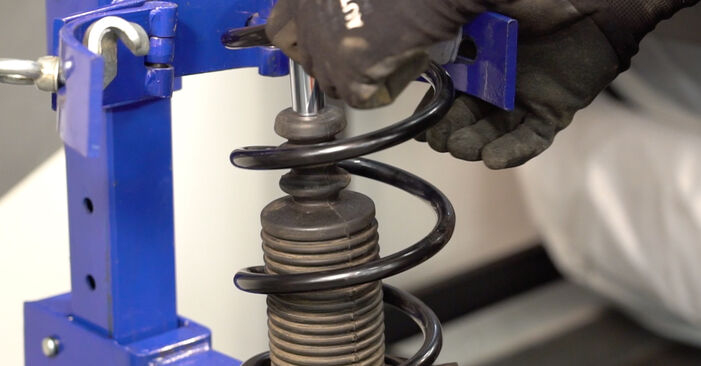 Install the spring on the shock absorber.
Install the spring on the shock absorber. - Step 30
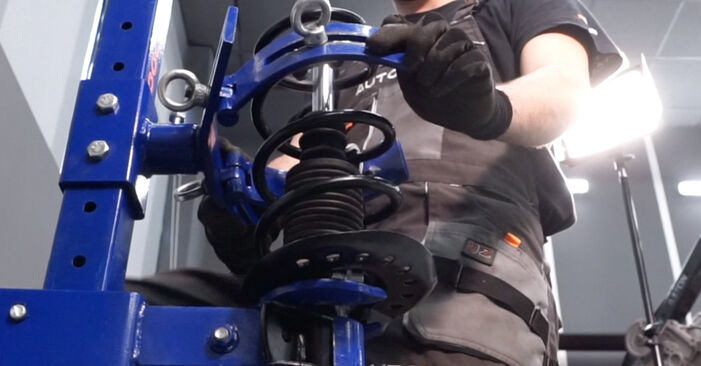 Compress the spring.
Compress the spring. - Step 31
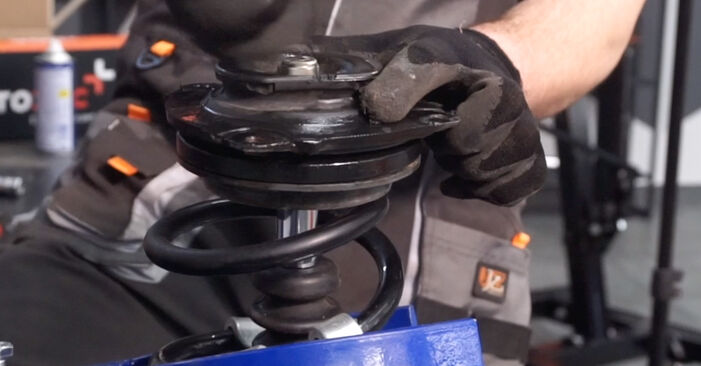 Install the upper strut mount and the strut mount bearing.
Install the upper strut mount and the strut mount bearing. - Step 32
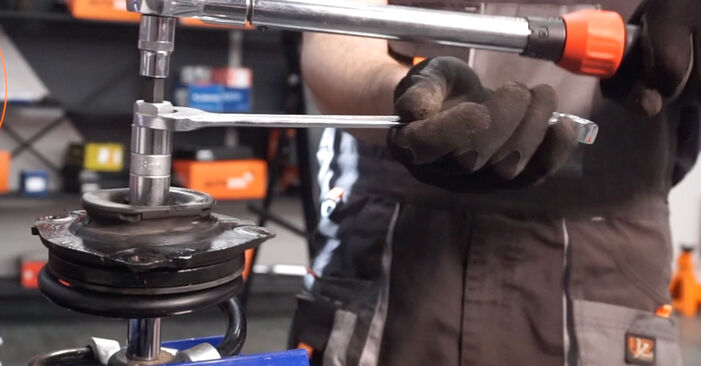 Tighten the shock strut piston rod nut. Use a drive socket #18. Use HEX No.H6. Use a torque wrench. Tighten it to 68 Nm torque.Replacement: coil springs – Nissan Leaf ZE0. AUTODOC recommends:Check to make sure the spring is positioned correctly. Avoid its misalignment.
Tighten the shock strut piston rod nut. Use a drive socket #18. Use HEX No.H6. Use a torque wrench. Tighten it to 68 Nm torque.Replacement: coil springs – Nissan Leaf ZE0. AUTODOC recommends:Check to make sure the spring is positioned correctly. Avoid its misalignment. - Step 33
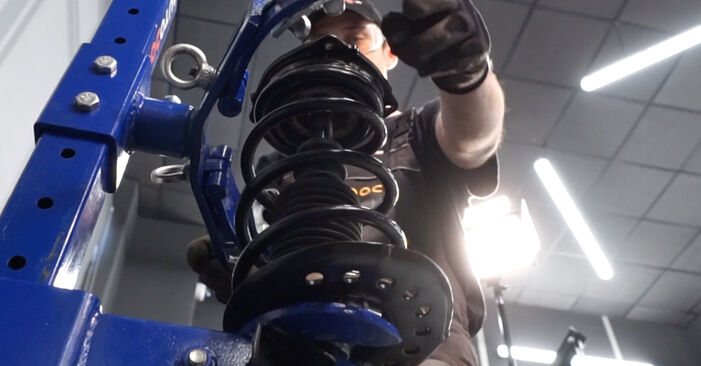 Decompress the spring.
Decompress the spring. - Step 34
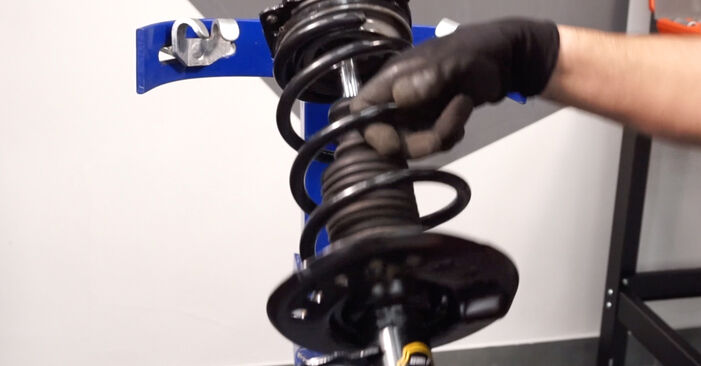 Remove the assembled shock strut.
Remove the assembled shock strut.
Was this manual helpful?
Please rate this manual on a scale from 1 to 5. If you have any questions, feel free to ask us.
Users voted – 0
Need New Tyres?
Find out which tyre and wheel sizes are compatible with the NISSAN Leaf I (ZE0) model

Popular maintenance tutorials for NISSAN LEAF
Complete guides for changing the Springs on different NISSAN LEAF models
Unlock your car maintenance assistant!
Track expenses, manage logs, schedule replacements, and more.
Tips & tricks for your NISSAN LEAF
View more
 Understanding Airbag Light Warnings | Essential Tips for Car Safety
Understanding Airbag Light Warnings | Essential Tips for Car Safety The Fast and Easy Way to Fix a Broken Wheel Stud | AUTODOC tips
The Fast and Easy Way to Fix a Broken Wheel Stud | AUTODOC tips 5 Essential Tips to Prepare Your Car for Winter | AUTODOC tips
5 Essential Tips to Prepare Your Car for Winter | AUTODOC tips Top 5 brake repair mistakes | AUTODOC tips
Top 5 brake repair mistakes | AUTODOC tips
Most commonly replaced car parts on NISSAN LEAF

Time to replace parts? Get even better deals in our Shop app.

SCAN ME


